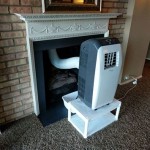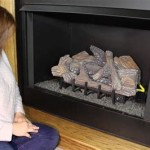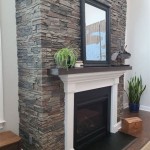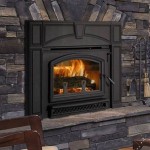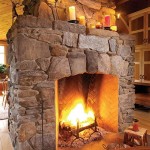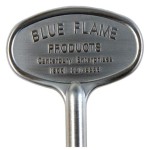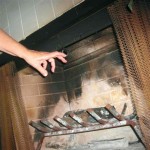Hamilton Parker Gas Fireplaces: A Comprehensive Overview
Hamilton Parker has established itself as a prominent distributor of high-quality home improvement products, including a wide range of gas fireplaces. This article delves into the various aspects of Hamilton Parker gas fireplaces, exploring their features, benefits, installation considerations, and maintenance requirements. The information provided aims to offer a comprehensive understanding for potential buyers and existing owners alike.
Gas fireplaces offer a convenient and efficient alternative to traditional wood-burning fireplaces. They eliminate the need for wood storage, reduce emissions, and provide instant heat at the touch of a button. Hamilton Parker offers a diverse selection of gas fireplace models, catering to various aesthetic preferences and heating needs. From traditional log sets to contemporary linear designs, consumers can find a fireplace that complements their home's décor and provides a comfortable and inviting atmosphere.
Key Features and Benefits of Hamilton Parker Gas Fireplaces
Hamilton Parker gas fireplaces boast a variety of features designed to enhance performance, safety, and aesthetics. These features contribute to an improved user experience and make gas fireplaces a compelling choice for modern homeowners. The following presents some of the key benefits and features that distinguish Hamilton Parker gas fireplaces.
Variety of Styles and Designs: Hamilton Parker offers a diverse range of gas fireplace styles, including traditional, contemporary, and linear models. Traditional fireplaces often mimic the look of wood-burning fireplaces with realistic log sets and glowing embers. Contemporary fireplaces feature sleek, modern designs with glass or stone media. Linear fireplaces, characterized by their long, horizontal shape, provide a dramatic focal point in any room. This variety allows homeowners to select a fireplace that seamlessly integrates with their existing interior design.
Heating Efficiency and Performance: Gas fireplaces are known for their heating efficiency. They convert a significant portion of the fuel into usable heat, providing warmth and comfort to the living space. Hamilton Parker offers models with varying BTU (British Thermal Unit) outputs, allowing consumers to choose a fireplace that matches the heating requirements of their room size. Some models also feature adjustable flame height and heat output, providing greater control over the temperature and ambiance.
Safety Features: Safety is a paramount concern with any heating appliance. Hamilton Parker gas fireplaces incorporate multiple safety features to protect users from potential hazards. These features often include safety shut-off valves that automatically cut off the gas supply if the flame is extinguished, preventing gas leaks. Child safety screens are also available to prevent accidental burns from contact with the hot glass surface. Many models are equipped with oxygen depletion sensors (ODS) that monitor the oxygen level in the room and shut off the fireplace if the oxygen level drops to an unsafe level.
Convenience and Ease of Use: Gas fireplaces offer unparalleled convenience compared to wood-burning fireplaces. They eliminate the need for wood chopping, stacking, and cleaning up ashes. With the push of a button or the flick of a switch, the fireplace ignites and provides instant heat. Many models come with remote controls, allowing users to adjust the flame height, heat output, and even turn the fireplace on and off from the comfort of their couch. Thermostatic controls are also available, enabling the fireplace to maintain a consistent temperature in the room.
Environmental Friendliness: Gas fireplaces are generally considered more environmentally friendly than wood-burning fireplaces. They produce significantly fewer emissions, reducing air pollution and contributing to a cleaner environment. Natural gas is a relatively clean-burning fuel, and modern gas fireplaces are designed to maximize combustion efficiency, minimizing emissions. Choosing a gas fireplace can be a responsible choice for environmentally conscious homeowners.
Vent Options: Hamilton Parker offers gas fireplaces with various venting options, including direct vent, vent-free, and B-vent models. Direct vent fireplaces vent exhaust gases directly to the outside through a sealed system, ensuring that no combustion byproducts enter the home. Vent-free fireplaces do not require venting and can be installed in virtually any room, but they require careful consideration of ventilation to ensure adequate oxygen levels. B-vent fireplaces vent exhaust gases through an existing chimney or a dedicated B-vent pipe. The choice of venting option depends on the home's construction and the homeowner's preferences.
Customization Options: In addition to various styles and designs, Hamilton Parker gas fireplaces offer customization options to personalize the look and feel of the fireplace. These options include different log set configurations, media options such as glass beads or stones, and decorative fronts or surrounds. Homeowners can also choose from a variety of finishes for the fireplace frame and trim to match their existing décor. These customization options allow homeowners to create a unique and personalized fireplace that reflects their individual style.
Installation Considerations for Hamilton Parker Gas Fireplaces
Proper installation is crucial for the safe and efficient operation of a gas fireplace. It is strongly recommended to have a qualified and licensed professional install the fireplace to ensure compliance with local building codes and safety regulations. The installation process involves several key steps, including gas line connection, venting, and electrical wiring. Careful planning and execution are essential to avoid potential hazards and ensure optimal performance.
Gas Line Connection: Connecting the gas line is a critical step in the installation process. A qualified gas fitter must connect the fireplace to the existing gas line, ensuring a secure and leak-free connection. The gas line must be properly sized to provide adequate gas flow to the fireplace. It is also essential to install a shut-off valve near the fireplace to allow for easy servicing and maintenance.
Venting: The venting system must be properly installed to ensure the safe and efficient removal of exhaust gases. Direct vent fireplaces require a sealed venting system that vents directly to the outside. Vent-free fireplaces do not require venting, but they require adequate ventilation in the room. B-vent fireplaces require a dedicated B-vent pipe or an existing chimney that is in good condition. The venting system must be installed according to the manufacturer's instructions and local building codes.
Electrical Wiring: Some gas fireplaces require electrical wiring to power the ignition system, blower, or remote control. A qualified electrician must connect the fireplace to the electrical system, ensuring proper grounding and circuit protection. It is essential to follow the manufacturer's instructions for electrical wiring to avoid potential electrical hazards.
Clearances: Gas fireplaces require specific clearances from combustible materials to prevent fire hazards. The manufacturer's instructions will specify the minimum clearances required for the sides, top, and front of the fireplace. It is crucial to maintain these clearances to ensure the safe operation of the fireplace.
Local Building Codes: Gas fireplace installations must comply with local building codes and regulations. These codes may vary depending on the location and may cover aspects such as gas line sizing, venting requirements, and electrical wiring. It is essential to consult with local building officials to ensure compliance with all applicable codes.
Maintenance and Care of Hamilton Parker Gas Fireplaces
Regular maintenance is essential to ensure the continued safe and efficient operation of a gas fireplace. Simple maintenance tasks can help to prevent problems and prolong the life of the fireplace. It is recommended to follow the manufacturer's instructions for maintenance and care. Some routine maintenance tasks include cleaning the glass, inspecting the logs or media, and checking the venting system.
Cleaning the Glass: The glass on a gas fireplace can become dirty over time due to soot and residue build-up. It is recommended to clean the glass regularly using a glass cleaner specifically designed for gas fireplaces. Avoid using abrasive cleaners or scouring pads, as these can scratch the glass. Wipe the glass with a soft cloth to remove any residue.
Inspecting the Logs or Media: Inspect the logs or media regularly for signs of damage or deterioration. Replace any damaged or deteriorating logs or media to ensure proper combustion and heating efficiency. Ensure that the logs or media are properly positioned according to the manufacturer's instructions.
Checking the Venting System: Inspect the venting system regularly for any obstructions or damage. Remove any debris or obstructions from the vent cap. Check for any signs of corrosion or leaks in the venting system. If any problems are detected, contact a qualified professional for inspection and repair.
Pilot Light Maintenance: Ensure the pilot light is burning properly. If the pilot light goes out frequently, it may indicate a problem with the gas valve or thermocouple. Contact a qualified professional for inspection and repair.
Professional Inspection: It is recommended to have a qualified professional inspect the gas fireplace annually to ensure it is operating safely and efficiently. A professional inspection can identify potential problems that may not be apparent to the homeowner and can help to prevent costly repairs in the future.
In conclusion, Hamilton Parker gas fireplaces present a broad range of options for homeowners seeking efficient and aesthetically pleasing heating solutions. The key features, installation considerations, and maintenance requirements detailed provide a comprehensive understanding of these fireplaces, aiding in informed decision-making and ensuring long-term satisfaction.

Artisan Vent Free Gas Fireplace Hamilton Parkerhamilton Parker

Fireplaces Frequently Asked Questions Hamilton Parkerhamilton Parker

Artisan Vent Free Gas Fireplace Hamilton Parkerhamilton Parker

Caliber Nxt Hamilton Parker

Rave Series Gas Fireplace Hamilton Parker

Artisan Vent Free Gas Fireplace Hamilton Parkerhamilton Parker

Related S Fireplaces Hamilton Parker

Fortress See Through Gas Fireplace Hamilton Parkerhamilton Parker

Novus Hamilton Parker

Rave Series Gas Fireplace Hamilton Parker
Related Posts

